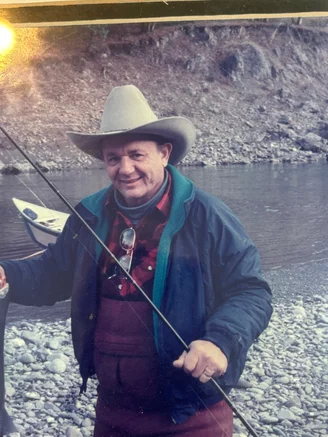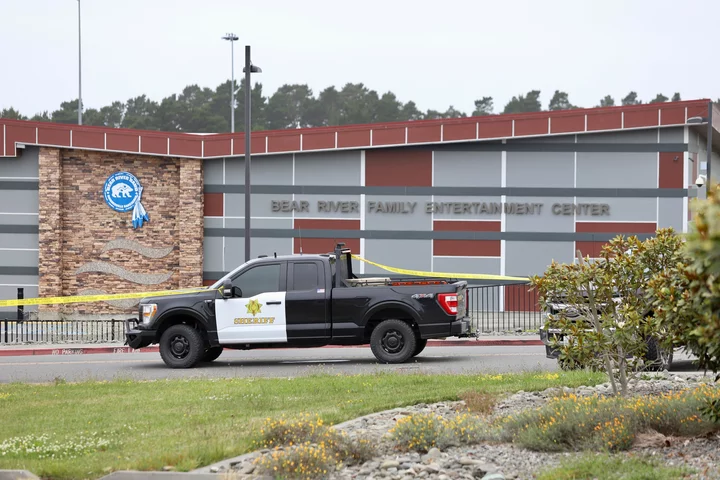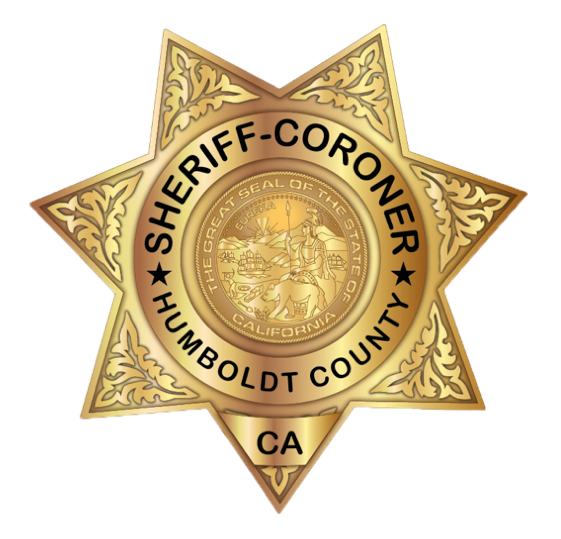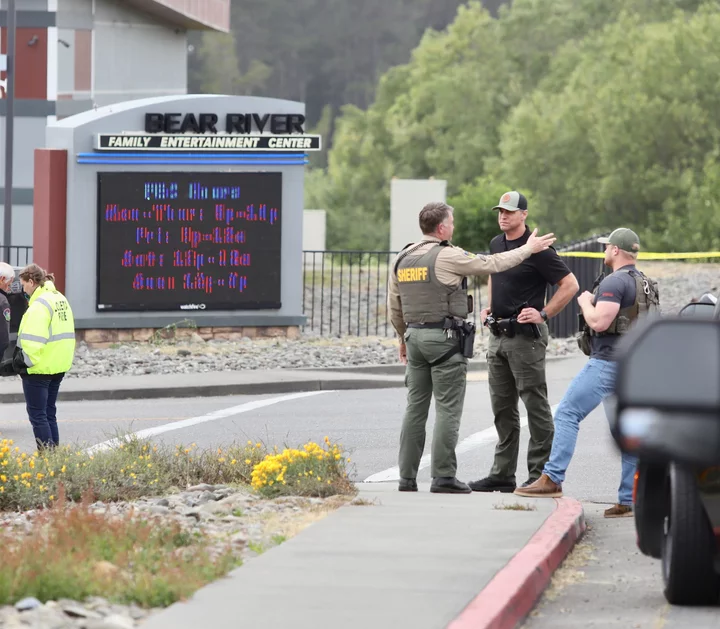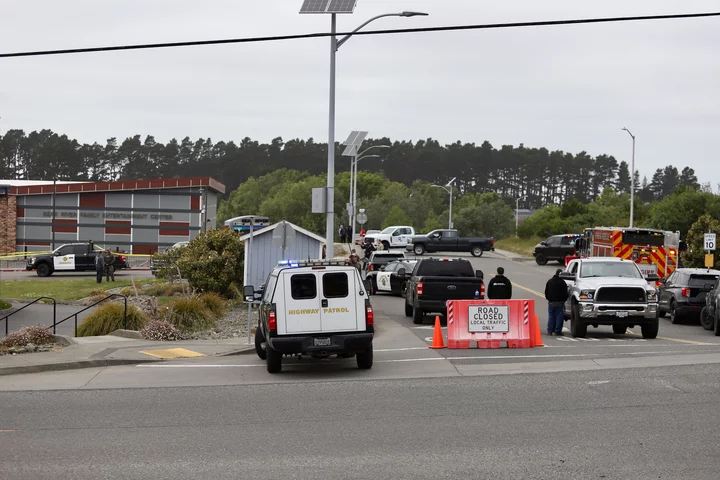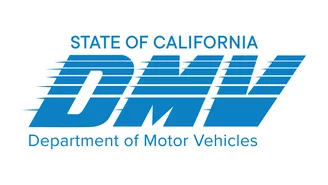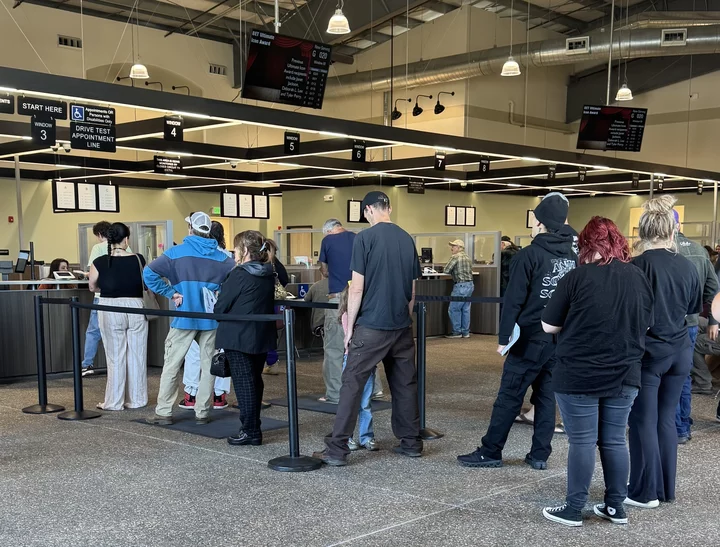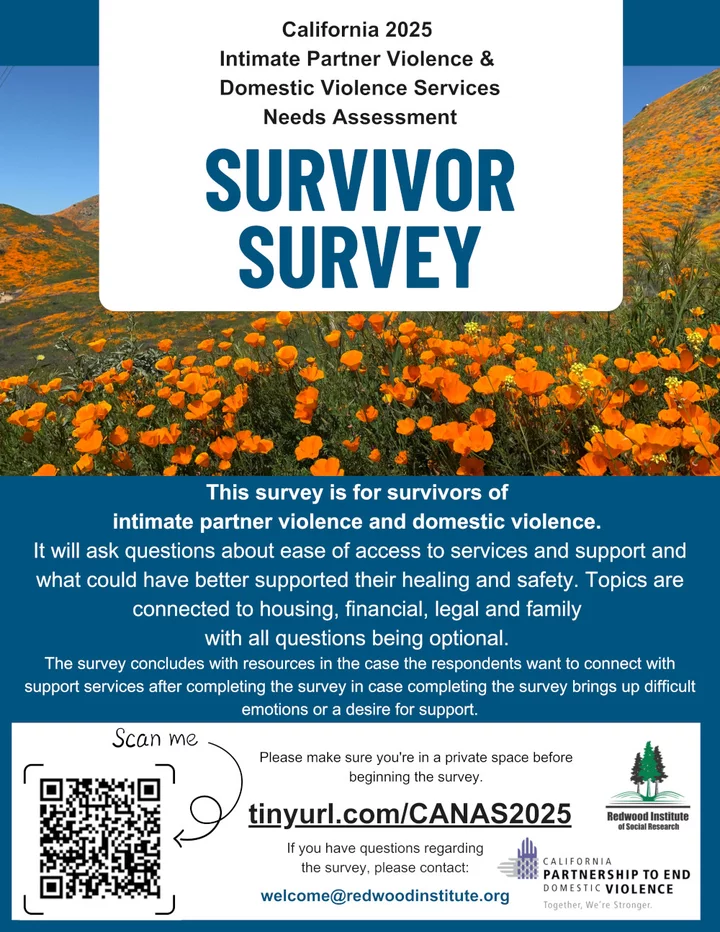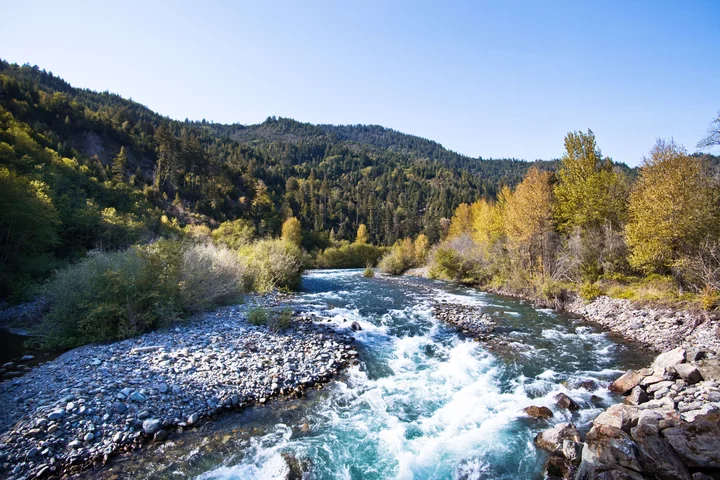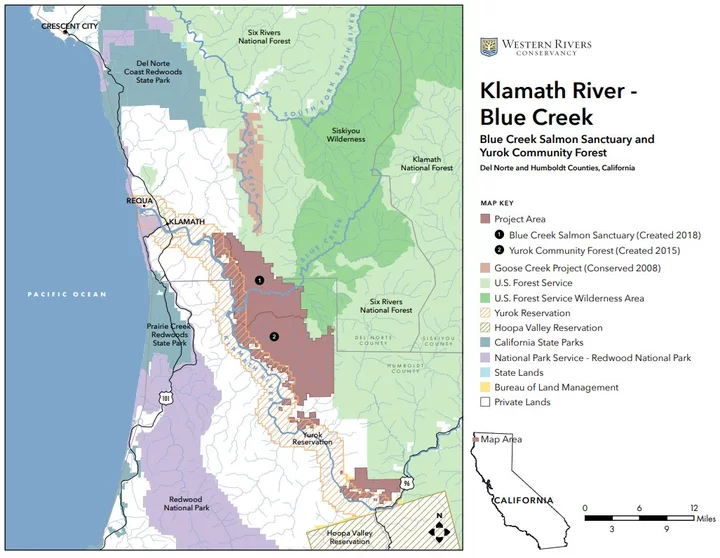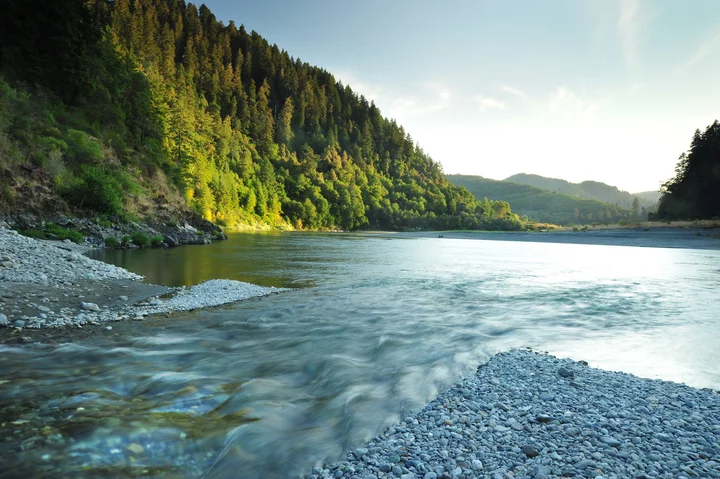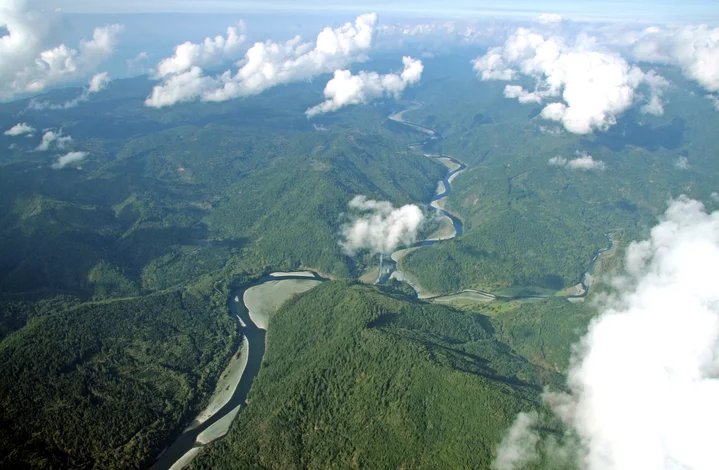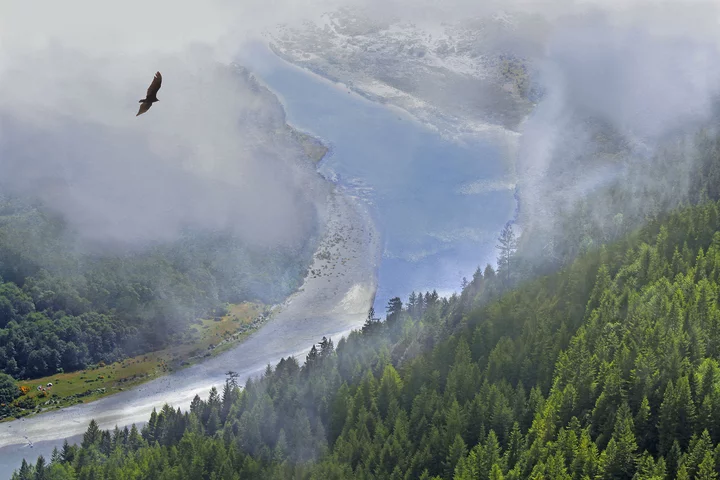OBITUARY: Richard Burton Sobieraj, 1941-2025
LoCO Staff / Friday, June 6 @ 7:13 a.m. / Obits
Richard Burton Sobieraj
July 26, 1941 – May 22, 2025
Richard Burton Sobieraj passed away peacefully at home on May 22, 2025, surrounded by his loving family. A devoted husband, father, grandfather, and friend, Richard lived a full and generous life marked by quiet strength, steady integrity, and an unwavering devotion to his loved ones.
Born in Utica, New York on July 26, 1941, Richard proudly served as a U.S. Navy veteran. He was an aircraft mechanic stationed aboard the USS Constellation (CV-64), known affectionately as “Connie,” where he contributed to the ship’s operations during active deployment. His service was a point of deep pride and shaped the hard working, dedicated, dependable man he would become.
After his military service, Richard built a long and respected career with PG&E, where he was known for his strong work ethic, calm presence, and readiness to lend a hand to colleagues and neighbors alike.
He is survived by his beloved wife, Edie and his six children, along with numerous grandchildren and great-grandchildren who brought him immense joy. Family was always at the center of Richard’s life, and he cherished every moment shared around the table, the road, or other outdoor adventures.
In retirement, Richard found joy in woodworking, shing, and his annual elk hunting trips— traditions he held dear. He loved the freedom of the open road, traveling the country in his RV with his wife, exploring scenic landscapes, and creating lasting memories. Whether crafting a handmade gift or casting a line on a quiet lake, Richard approached life with an adventurous mind set, care, and quiet humor.
His memory lives on in the laughter of his grandchildren, the hand-made projects he proudly completed, and the legacy of love and loyalty he leaves behind.
A private memorial will be held to honor Richard’s life and legacy.
###
The obituary above was submitted on behalf of Richard Sobieraj’s loved ones. The Lost Coast Outpost runs obituaries of Humboldt County residents at no charge. See guidelines here. Email news@lostcoastoutpost.com.
BOOKED
Today: 5 felonies, 18 misdemeanors, 0 infractions
JUDGED
Humboldt County Superior Court Calendar: Today
CHP REPORTS
Blue Lake Rd / Willowbrook Ct (HM office): Traffic Hazard
Briceland Thorn Rd / Perry Meadow Rd (HM office): Trfc Collision-No Inj
ELSEWHERE
RHBB: Driver Strikes Two Parked Vehicles in Rio Dell
Study Finds: Why Americans Keep Gaining Weight Despite Burning More Calories Than Ever
Science Alert: Virus Traces Discovered in The Brain Lining of People With Schizophrenia
CNN: A US citizen and Army veteran was detained at an immigration raid and held for 3 days.
SHERIFF’S OFFICE: Today’s Shooting at Bear River Was Witnessed by Several and Captured on Body Cam Footage; Investigation Underway
LoCO Staff / Thursday, June 5 @ 7:14 p.m. / Crime
Photo: Andrew Goff.
###
PREVIOUSLY:
###
Press release from the Humboldt County Sheriff’s Office:
On June 5 at 2:16 p.m., the Humboldt County Sheriff’s Office (HCSO) received a call reporting a male subject who had entered the Bear River Recreation Center with a bandaged, bloody arm and was actively dripping blood throughout the facility. HCSO deputies arrived on scene and determined that the subject was uncooperative but in need of medical attention. Emergency medical assistance was requested but the subject refused treatment.
At approximately 3:30 p.m., HCSO deputies cleared the scene and the subject agreed to leave. However, instead of leaving, the subject became combative and confronted the deputies with a weapon in a threatening manner. An HCSO deputy discharged their service weapon at the suspect, striking the suspect.
Emergency medical assistance was rendered immediately and fire and medical personnel were dispatched to the scene. The suspect was transported to a local hospital where he was pronounced deceased.
The suspect is a 29-year-old white male adult. He does not appear to be a resident of Humboldt County or affiliated with the Bear River Rancheria.
This case is currently under investigation. The Critical Incident Response Team has been notified and will be investigating this case alongside the Humboldt County District Attorney’s Office and the HCSO Major Crimes Division. This investigation is predicted to last several hours, and the roadway will remain closed for evidence collection. This incident was witnessed by several people at the scene and was captured on body-worn camera.
More information will be released as it becomes available.
Anyone with information about this case or related criminal activity is encouraged to call the HCSO Major Crimes Division at (707) 268-2539.
(UPDATE: SHERIFF PRESS CONFERENCE) Officer-Involved Shooting Near the Bear River Recreation Center
Hank Sims / Thursday, June 5 @ 4:13 p.m. / Crime
Sheriff William Honsal speaks to reporters at 5 p.m.
UPDATE, 5:11 p.m.: Moments ago, Sheriff Billy Honsal told the reporters that the man who was shot — a 29-year-old who had been acting oddly and in distress for an hour or more before the incident — has died.
A weapon was was found on the man, Honsal said, though he declined to specify what that weapon was.
The man was not a Humboldt County resident, nor a member of the tribe, Honsal said.
Honsal’s full statement to reporters at the scene can be found above.
###
Photos: Andrew Goff.
UPDATE, 4:32 p.m.: Sheriff William Honsal tells the Outpost that they are still gathering information, but that he hopes to be able to provide some sort of official statement before 5 p.m.
###
ORIGINAL POST:
Just after 3:30 p.m. today, a law enforcement officer shot a person near the Bear River Recreation Center.
It’s unclear exactly what led to the shooting, though scanner archives indicate that a sheriff’s deputy was holding a person at gunpoint shortly before firing. Medical personnel were dispatched to the location, along with backup law enforcement officers from the Fortuna Police Department and the California Highway Patrol. Sheriff William Honsal arrived on the scene and assumed command about 15 minutes after the shooting occurred.
No deputies were injured in the incident, according to scanner traffic.
Roads are currently closed east of Singley Hill Road, on the east side of the Rancheria, though the casino and gas station, on the west side, are still open.
The Outpost’s Andrew Goff is at the scene. We’ll be updating as we learn more.
Getting My Real ID on Opening Day of the Brand-New Eureka DMV
Isabella Vanderheiden / Thursday, June 5 @ 1:52 p.m. / Government
I present to you: The new Eureka branch of the California Department of Motor Vehicles. | Photo: Isabella Vanderheiden
###
Good news for people who have been slacking on getting their Real IDs: Eureka’s brand-new Department of Motor Vehicles (DMV) office is open for business!
After a five-and-a-half-year stay at the Bayshore Mall, the Eureka DMV has relocated to its new home at 2500 Sixth Street — the former Redwood Harley-Davidson at the northernmost end of town, just off Highway 101. The DMV closed its local office for a few weeks to accommodate the move, and on Wednesday, the widely despised government agency welcomed drivers to its new location.
To commemorate this momentous occasion, your Lost Coast Outpost thought it might be fun to check out the DMV’s new digs and go through the minute-by-minute process of obtaining a Real ID because, yeah, I’ve been slackin’ on that too.
###
10:05 a.m.: As I approach the newly remodeled building, I look up at its government-sanctioned façade — a muted combination of Stonehenge Greige (brown), Crushed Silk (light tan), Night Rendezvous (blue) and Special Delivery (grey) — and the bold, electric blue “DMV” at its focal point. I contemplate its recent transformation from Redwood Harley-Davidson to a government agency and imagine a leather-clad biker patiently guiding someone through the painstaking process of correcting their misspelled name on their driver’s license. (Yes, this has happened to me.)
I walk past a sandwich board sign politely reminding visitors that certain services are no longer offered at the DMV offices, including vehicle registration renewal, most driver’s license/ID card renewals/replacements and driver/vehicle record requests. Apparently, you can do all that stuff online, but there is still a registration kiosk inside the new DMV.
I pull the door open and find myself at the tail end of a 25-person line snaking toward an employee sitting below a sign asking DMV visitors to “START HERE” for “NON-APPOINTMENTS ONLY.” A robotic female voice calls out numbers in the queue, and it makes me think of nursing home bingo. “Now serving B012 at window number eight.”
10:08 a.m.: The woman in front of me indulges in the unshakable urge to ask a man heading for the door how long he had to wait in line. “About an hour,” he replies, adding that it didn’t take as long as expected, considering it is opening day and all. A few people ahead of me, a mother bounces her baby up and down as a toddler runs in circles around her legs. The man in front of me is wearing a Playboy shirt.
I look up at the cavernous ceiling and marvel at the gigantic fan slowly spinning over our heads. I try to mentally measure its diameter — eight or nine feet? — and recall that there is a real business called Big Ass Fans.
Behind me, someone comments on how lovely the big windows are, adding that they like this space much more than the previous DMV location in the Bayshore Mall. That makes me kind of sad because, as you may already know, I love the Bayshore Mall. In fact, it kind of makes me want a Pretzel Dog™ from the Pretzelmaker.
Focus, Izzy.
10:17 a.m.: An energetic-looking woman with a lanyard and a coffee thermos walks toward us and asks if anyone in line needs to renew their license or apply for a Real ID. I raise my hand along with several others, and she directs us to a row of four or five computers and to fill out an online application. (If you want to save yourself some time, you can find the application for Real ID here.) It’s pretty straightforward, just the run-of-the-mill questions you’d answer for a regular driver’s license renewal application. I finish it in just a few minutes and go to the end of the line.
Should I have asked for my spot back? That seems presumptuous. This is fine, there are only a dozen-odd people ahead of me.
10:21 a.m.: I look around the room and try to think about some of the other stuff future DMV visitors would want to know about. I count 13 service windows and note that the area where you have your picture taken is way down the line, out of view from people in the waiting area. Nice touch!
I notice the TV screens above the service windows are cycling through tips and tricks to make your DMV visit as efficient and enjoyable as possible. Woven in are bits of trivia about interval walking and the Carnarvon flapjack octopus, a newly discovered species of deep-sea octopus that can flatten itself into a pancake-like disc. There’s another video about Dubai chocolate, a pistachio-based treat, being sold at Trader Joe’s, and I laugh to myself thinking that the innards of the chocolate bar look like bits of the Grinch.
“Now serving G020 at window number six.”
Waiting line #1
10:30 a.m.: A new arrival announces to the people around him that he expected a big line on opening day, and takes the opportunity to bash the previous DMV local at the Bayshore Mall. I think about the Pretzel Dog™ again. The new arrival points at a curly-haired DMV employee at one of the service windows and tells the woman beside him that “she is the best.”
11:09 a.m.: Finally! I have ARRIVED! I tell the polite woman behind the counter that I am here to apply for a Real ID, eagerly adding that I’ve already filled out an application. She nods and asks for a form of identification and two pieces of mail to prove that I am not lying about my address. I present my passport, a jury duty summons and a tax form, adding that I also have my social security card on hand “just in case.” She doesn’t seem impressed.
She hands my documents back to me along with a sheet of paper and asks if I’m ok with an “extremely long” wait, noting that there are 40 people ahead of me and lunchtime is quickly approaching. I courageously tell her it’s “totally fine,” but ask if she can give me a rough estimate of the wait time. She says she isn’t sure and assigns me G054.
I take a seat in a cluster of maroon chairs, suddenly realizing that “Dancing Queen” by ABBA is playing softly over the speakers. I notice another child running circles around their mother’s legs while she waits in line at the registration renewal kiosk.
11:20 a.m.: The man in front of me is loudly listening to enthusiastic sports commentators on his phone. Seemingly reading my mind, he turns the volume down and brings his phone a little closer to his ear. He alternates between listening and watching.
I notice a couple sharing a pair of white earbuds, and it reminds me of bus rides home from middle school, listening to a burned copy of “American Idiot” by Green Day with my best friend. I reflect on my first emo phase and start thinking about music of the early aughts, when suddenly, as if the DMV is reading my mind, “In Too Deep” by Sum 41 starts playing.
“Now serving B034 at window number eight.”
11:52 a.m.: As I begin to wonder how the lunchtime procedure works, I receive a text message informing me that my number will be called shortly. My heart flutters. “What is Love” by Haddaway is playing, and I think of the 1998 comedy sensation, A Night at the Roxbury.
12:10 p.m.: Things are moving a little more slowly now that lunch is underway. I think the feminine robot just called out G045, meaning there’s about nine people ahead of me. I start playing the Wednesday edition of the New York Times crossword puzzle and roll my eyes at the clue: “They might be decked in December.”
12:45 p.m.: I jump out of my seat when G054 is finally called and am delighted to see the aforementioned curly-haired employee beckoning me to Window Six. I hand her my paperclipped documents, and she begins scanning, bopping along with “Walking on the Sun” by Smash Mouth. Holding my passport, she looks up and me and smiles, informing me that she, too, is a Virgo.
As she scans my documents, I compliment her lovely disposition, and we talk about the importance of treating others with kindness. She calls me “darlin” a few times, and I just absolutely melt.
Singing along with a U2 song I didn’t know, she returns my documents and hands me a few pieces of paper, directing me to a window a little further down to have my picture taken. “Stay beautiful!” she says, and I very nearly skip into the sunset.
12:50 p.m.: Down at the picture-taking station, another employee asks for my thumbprint and signature. I’m somewhat embarrassed by how sloppy my signature looks. She asks me to stand in front of a bright blue background and smile as the flash flashes.
With the image secured, she tells me I can expect my brand-spankin’ new Real ID in the mail sometime in the next four weeks and sends me on my way. I bid her adieu and head out the exit conveniently located right behind me. I check the clock: 12:55 p.m.
###
And there you have it, Humboldt! The new space is really nice and the wait times are still long, but not nearly as bad as those that the city folk have to deal with. The big takeaway: That guy was right — the DMV employee with the curly hair is truly the best.
Arcata Will Get Some More Bikeshare Stations; Nitrous Oxide Ordinance Passed
Dezmond Remington / Thursday, June 5 @ 11:59 a.m. / Arcata
Tandem Mobility bicycles at the bikeshare station on Sunset Avenue in Arcata. By City of Arcata.
More bicycles!
Arcata’s city council voted unanimously last night to sponsor two more bikeshare stations on Cal Poly Humboldt’s campus.
There are currently eight Tandem Mobility stations scattered around Arcata in places that see a lot of foot traffic, each outfitted with a few heavy-duty commuter bikes complete with a basket. Cyclists can rent a bike for $1.50 for every 30 minutes of riding, though there are discounted yearly memberships. Riders can return the bike to any of the stations.
The city currently pays $72,000 a year for the stations. Cal Poly Humboldt provides $18,000 of that, and the remainder is funded through the Affordable Housing and Sustainable Communities (AHSC) grant and Bike and Pedestrian Local Transportation funds from the Humboldt County Association of Governments.
The $22,000 for the two new stations, located at Cal Poly Humboldt’s new Hinarr Hu Moulik dorms, will be paid by CPH. (The city is the party responsible for contracting with Tandem Mobility, so even though CPH is the entity kicking in the funds, the contract had to be updated through city council.)
The bikes were rented over 2,500 times last year by 1,618 riders, and city engineer Netra Khatri predicted an even more widespread adoption as time passes.
These stations won’t be the last. Khatri said there are plans to build three more: one in Sunny Brea, one by the Arcata Marsh, and one at the end of 11th Street near Greenview Market. He’s also trying to convince Eureka to build some within their city limits after the Bay Trail is complete, funded by the same AHSC grant — all part of a grand plan to enable people to cycle between the two cities and drop the bikes off as need be.
“It would be really nice to connect with Eureka too once that trail is open,” councilmember Sarah Schaefer said. “I’m really looking forward to that.”
Nitrous ban official
At the last city council meeting two weeks ago, a motion to adopt an ordinance to ban the sale of nitrous oxide passed 5-0, meaning it was on last night’s consent calendar. There was no conversation from the city council or from the public about the ordinance. The city council passed the consent calendar, so it’s official; including today, there are 30 days left until it’ll be illegal to sell nitrous oxide in Arcata, except for medical purposes or if it’s in a food product.
Are You a Victim of Domestic Violence? A Social Services Provider? Please Share Your Story With Researchers Who Are Hoping to Improve the Support System For People in That Situation
LoCO Staff / Thursday, June 5 @ 11:55 a.m. / Health Care
Press release from the Redwood Institute of Social Research:
Help Strengthen Domestic Violence Services Across California—Your Voice Matters
Redwood Institute of Social Research (RISR) is reaching out to ask for your support in an important statewide project. We are seeking input from advocates, service providers, and people with lived experience of domestic violence/ intimate partner violence. Your voice is essential in helping to identify current needs, challenges, and opportunities to improve domestic violence services across California.
Our team is conducting the California 2025 Intimate Partner Violence and Domestic Violence Services Needs Assessment for the California Partnership to End Domestic Violence (the Partnership). Your participation will have a direct impact on the training, resources, and support made available to advocates and service providers working to address intimate partner violence across the state. How can you help?
If you are a social service provider, please complete the Provider Survey (approximately 20 minutes) and/or share it with your colleagues
If you have lived experience with domestic violence, please complete the Survivor Survey (approximately 20 minutes), or share with survivors that you know and/or work with
Promote the project through social media and/or pass along to other organizations
Share your organization’s data. RISR is collecting information from organizations throughout California to gather current trends and demographics. This could include data from program evaluations and surveys you have completed in your own organization. If you have data to share please fill out this form and RISR will be in contact with you.
You can access resources to assist with outreach and communication efforts by visiting our online resource folder. Thank you for supporting this important initiative!
(PHOTOS) Largest-Ever Land Back Deal in California Returns 73 Square Miles on Lower Klamath to Yurok Tribe
LoCO Staff / Thursday, June 5 @ 11:02 a.m. / Nature , Tribes
The Blue Creek Salmon Sanctuary. | Photo by Cindy Diaz.
###
The following press release was issued jointly by the Yurok Tribe, Western Rivers Conservancy and the California Wildlife Conservation Board:
Today, Western Rivers Conservancy (WRC), the Yurok Tribe, the California Wildlife Conservation Board (WCB) and the California State Coastal Conservancy (CSCC) announce completion of the largest single “land back” deal in California history, marking a milestone achievement for conservation and Tribal sovereignty. The 73 square miles of land along the eastern side of the lower Klamath River are now owned and managed by the Yurok Tribe as the Blue Creek Salmon Sanctuary and Yurok Tribal Community Forest. (See map below.) Establishing Tribal ownership safeguards the long-term health of this critical ecosystem and culturally significant sites along the Klamath, which is home to one of the most important fall Chinook salmon runs on the West Coast. The conveyance of these lands to the Tribe has more than doubled the Tribe’s land holdings; both California state agencies provided crucial funding to enable this transfer of ownership.
“On behalf of the Yurok people, I want to sincerely thank Western Rivers Conservancy for their longtime partnership and commitment to return a major part of our homeland. The impact of this project is enormous,” said Joseph L. James, the chairman of the Yurok Tribe. “In working together for over two decades establishing the Community Forest and Salmon Sanctuary, we are forging a sustainable future for the fish, forests and our people that honors both ecological integrity and our cultural heritage.”
The 47,097 acres of ancestral lands, located in the lower Klamath River watershed, play a crucial role in improving the health of Blue Creek, which carries great spiritual significance for the Yurok Tribe and is a crucial cold-water lifeline to the fish of the Klamath River. The forests, river lands and prairies they contain provide habitat for numerous imperiledspecies, including coho and Chinook salmon, marbled murrelet, northern spotted owl and Humboldt marten. Blue Creek serves as a vital cold-water refuge for salmon, steelhead and other fish in an era of climate change.
Nelson Mathews, president of Western Rivers Conservancy, emphasized the broader environmental benefits of this achievement: “This project exemplifies the power of partnership, showcasing how conservation efforts and the land back movement can come together to benefit the rivers, fish, wildlife and people of an entire landscape. After more than 20 years of close collaboration with the Yurok Tribe, we have together achieved this magnificent conservation success while ensuring these lands and waters are in the hands of those most deeply committed to their future health and sustainable use. Blue Creek and its watershed are critical to the health of the entire Klamath fishery. The Yurok Tribe has the resources and the deep cultural connections that sustained this land for millennia, and now they can continue to do so.”
About the Blue Creek Project
Today’s announcement marks the completion of Western Rivers Conservancy’s 23-year effort to convey 47,097 acres of critical lands along the Klamath River and encompassing the lower Blue Creek watershed, including their confluence, to the Yurok Tribe. From 2009 through 2017, WRC acquired or facilitated transfer of the lands from Green Diamond Resource Company in multiple phases; conveyance of the lands from WRC to the Yurok has happened in multiple phases as well. The conveyance of the final 14,968 acres from WRC to the Yurok Tribe closed on May 30, 2025.
The historic 47,097-acre land transfer, at a purchase price of $56 million, encompasses the entire lower half of the Blue Creek watershed, 25 miles of the eastern bank of the Klamath River and dozens of miles of smaller salmon-bearing tributary streams, including Blue Creek, Bear Creek, Pecwan Creek and Ke’Pel Creek. The lands were owned and managed as commercial timberland by Green Diamond and its predecessor Simpson Logging Company for nearly 100 years. These lands are the ancestral homelands of the Yurok Tribe, who have lived along the Klamath River and depended on its salmon since time immemorial. This collaboration between a nonprofit conservation organization and a Native American Tribe reflects the growing intersectional movement between land back and environmental stewardship in the United States.
To pay for the project, WRC pieced together an innovative funding strategy that brought together $56 million in private capital, low interest loans, tax credits and carbon credit sales. Of that, only $8 million was through direct public grants. The private funding included traditional sources, such as gifts from private foundations, corporations and philanthropic individuals, as well as nontraditional sources like the sale of carbon credits, which will continue to support the project, and capital generated through the New Markets Tax Credit program of the U.S. Department of the Treasury.
In addition to raising the funds to purchase the land, WRC will also transfer $3.3 million generated through the sale of carbon credits to the Yurok Tribe to be used for future stewardship of the property. When project costs are included, the full value of the Blue Creek conveyance is over $70 million.
Photo by Peter Marbach.
A New Salmon Sanctuary and Tribal Community Forest
Conveyance of the final lands from WRC to the Yurok Tribe completes the Blue Creek Salmon Sanctuary, a 14,790-acre cold-water refuge surrounded by forest lands that will now be managed for forest complexity and old-growth health for the benefit of the Klamath River’s fish and wildlife. The entirety of Blue Creek is now permanently protected, from its headwaters and upper reaches in the Siskiyou Wilderness to its confluence with the Klamath River.
Located 16 miles upstream from the mouth of the Klamath, Blue Creek provides the first cold-water refuge in the river for migrating salmon and steelhead, allowing summer and fall-run fish to lower their body temperatures enough to survive their long journey to upstream spawning grounds. Blue Creek is thus an essential component of the overall health of the Klamath River and the entirety of its salmon runs, especially as the removal of all the Klamath dams has reopened vast spawning habitat in the upper river.
The other 32,307 acres of redwood and mixed conifer forest outside the Salmon Sanctuary now constitute the Yurok Tribal Community Forest. Already more than a decade in the making, the forest is being allowed to recover from nearly a century of industrial logging that left both the forest and the streams in need of extensive restoration. The Tribe’s sustainable forestry practices are focused on putting the Yurok Community Forest on a path to become more diverse and mature by increasing the time between harvests. The Community Forest provides jobs for Tribal members in forestry and restoration, helping build the future for the Yurok people. It also helps mitigate the effects of climate change. Recent research has demonstrated that redwood forests can store more carbon per acre than any other type of forest and that second-growth (previously logged) redwood forests have the greatest potential to accumulate carbon even faster than old-growth trees.
From 2013 until present, WRC worked in a formal co-management agreement with the Yurok Tribe to conduct the necessary planning and implementation for forest restoration and management, aquatic restoration, logging road removal and preparations for the final conveyance of land. This agreement served to build capacity and expertise for both WRC and the Yurok, as they collaborated to meet grant requirements, finalize the management plan and initiate on-the-ground restoration projects and chart the future of both the Salmon Sanctuary and the Community Forest.
Photo by Thomas Dunklin.
Western Rivers Conservancy and the Yurok Tribe’s Shared Vision for Blue Creek
WRC and the Yurok Tribe’s shared vision has been to create a sustainable and inclusive model of land management that prioritizes Blue Creek and the Klamath River and honors both ecological integrity and cultural heritage. The project’s outcomes benefit both land conservation and cultural repatriation.
“Everyone has a vested interest in seeing the Klamath salmon runs survive and thrive,” said WRC President Emerita and co-founder Sue Doroff, who launched the Blue Creek project and oversaw it until her retirement in June 2024. “Millions of dollars and immeasurable human energy are being invested in the Klamath River right now. There are two things that are key to the success of this massive effort to save this river and its salmon: Blue Creek and the Yurok people. I am honored beyond words to have worked together with the Yurok to ensure the Klamath and its fish and wildlife will have a salmon sanctuary and cold water refuge where they need it most.”
The Klamath River is in prolonged recovery from more than a century of logging, dams, gold mining and other human activities. In August 2024, the last three of four dams were removed from the upper Klamath River. Initiated by Klamath Basin tribes, the removal of these dams reopened more than 400 miles of salmon habitat in the upper river for the first time in over a century.
“The dams were the single biggest impediment to salmon production on the Klamath because they had such a negative influence on the river ecosystem. Through dam removal, protection and restoration of critical tributaries like Blue Creek and proper water management, we will restore the fish runs that sustained us and this entire region,” said Barry McCovey, director of the Yurok Fisheries Department, which employs nearly 100 scientists and technicians.
Western Rivers Conservancy – A Leader in Land Back
For more than 30 years, WRC has taken the lead in marrying conservation and tribal land-return outcomes, working with tribal nations to permanently protect rivers and the lands that sustain them. WRC and its many tribal partners, who are the original stewards of riverlands across the West, make natural conservation partners given that tribal nations often possess the resources, foresight, expertise and commitment to restore and conserve these vital places in perpetuity. Most recently, WRC conveyed 327 acres of the Little Sur River and surrounding ancestral redwood forest to the Esselen Tribe of Monterey County along California’s central coast. A complete list and history of WRC’s Tribal Nations partnerships are available here.
Project Funding
State funding and support for the Blue Creek Salmon Sanctuary and Yurok Tribal Community Forest was provided by the California Wildlife Conservation Board (WCB), California State Coastal Conservancy (CSCC), California Department of Fish and Wildlife and the California Environmental Enhancement and Mitigation Program.
“Returning these lands to the Yurok Tribe is an unprecedented step forward for the Klamath River, and it comes at a critical moment following the removal of the Klamath River dams. Returning ancestral lands to Native American tribes is an essential step in restoring ecological balance and health,” said Jennifer Norris, executive director of the California Wildlife Conservation Board. “WCB is proud to be part of this truly historic achievement, both for the Yurok people and as part of the broader effort to guarantee the long-term survival of the Klamath’s salmon and the wildlife of Northern California.”“Thanks to this incredible group of partners, the Blue Creek Salmon Sanctuary and Yurok Tribal Community Forest have become one of California’s great conservation successes—one that will nurture tribal resilience for the Yurok people, improve conditions for the Klamath River’s salmon and wildlife and carry forward the Coastal Conservancy’s mission of improving climate resilience on the California Coast,” said Amy Hutzel, executive officer of the California State Coastal Conservancy.
Additional support came from Compton Foundation, Lisa and Douglas Goldman Fund, George F. Jewett Foundation, The Kendeda Fund, Giles W. and Elise G. Mead Foundation, National Fish and Wildlife Foundation, National Fish and Wildlife Foundation/Acres for America and Walmart Stores, Inc., Natural Resources Conservation Service, David and Lucile Packard Foundation, the Land-Sea Connection program of Resources Legacy Fund made possible by the Keith Campbell Foundation for the Environment, U.S. Endowment for Forestry and Communities, Inc., U.S. Environmental Protection Agency, U.S. Fish and Wildlife Service, U.S. Forest Service, Bureau of Land Management, Weeden Foundation and The Wyss Foundation.
Please visit the Klamath River/Blue Creek project web page for additional information on this historic achievement, including a complete list of project funders and funding details.
Photo by Dave Jensen.

